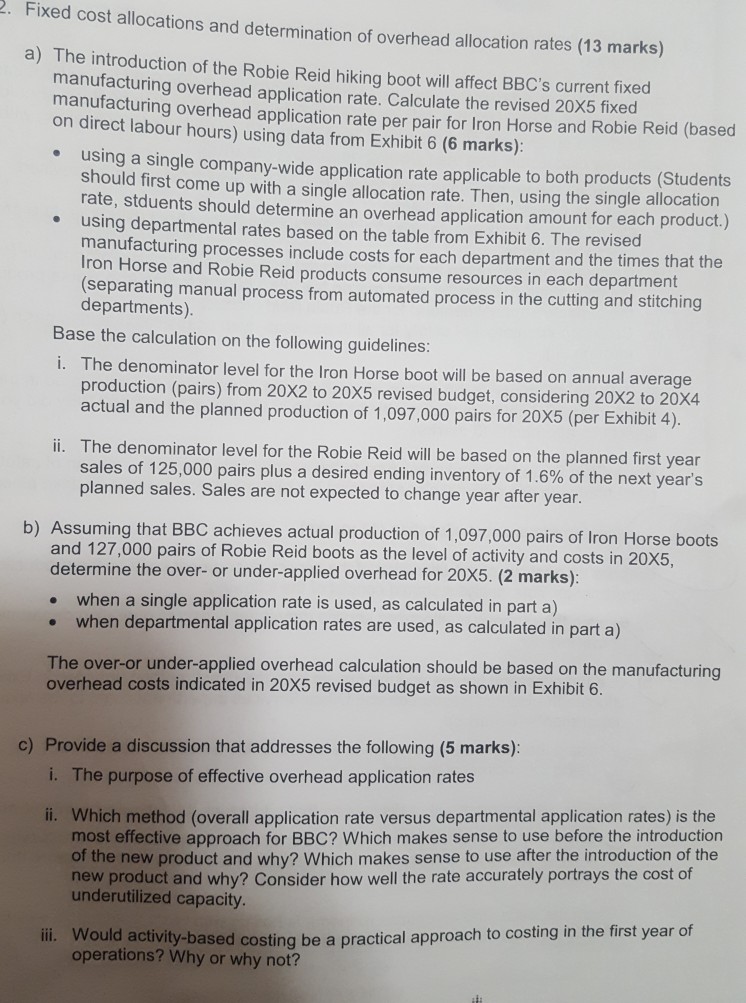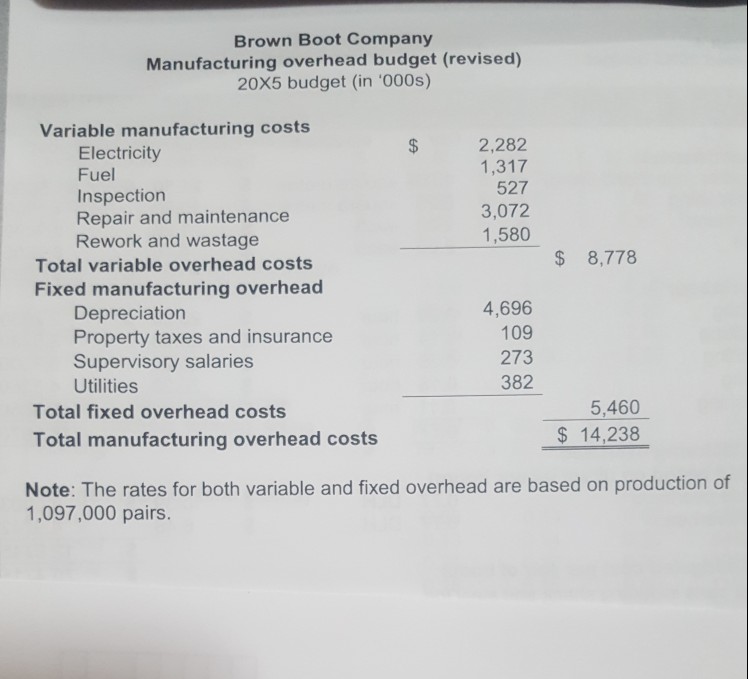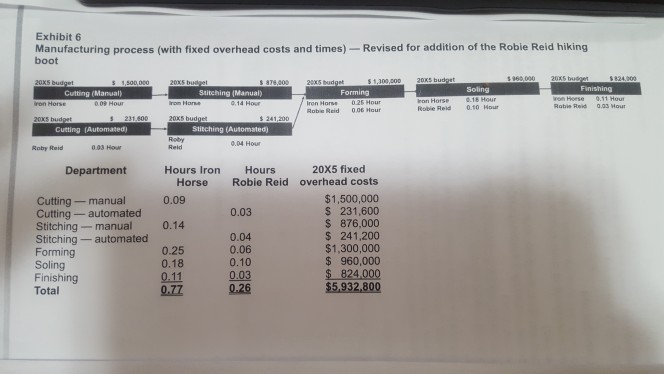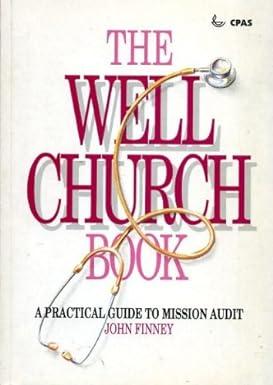Answered step by step
Verified Expert Solution
Question
1 Approved Answer
Fixe d cost allocations and determination of overhead allocation rates (13 marks) a) The introduction of the Robie Reid hiking boot will affect BBC's current




Fixe d cost allocations and determination of overhead allocation rates (13 marks) a) The introduction of the Robie Reid hiking boot will affect BBC's current fixed manufacturing overhead application rate. Calculate the revised 20X5 fixed manufacturing overhead application rate per pair for Iron Horse and Robie Reid (based on direct labour hours) using data from Exhibit 6 (6 marks) using a single company-wide application rate applicable to both products (Students should first come up with a single allocation rate. Then, using the single allocation rate, stduents should determine an overhead application amount for each product.) using departmental rates based on the table from Exhibit 6. The revised manufacturing processes include costs for each department and the times that t Iron Horse and Robie Reid products consume resources in each department separating manual process from automated process in the cutting and stitching departments) e he Base the calculation on the following guidelines i. The denominator level for the Iron Horse boot will be based on annual average production (pairs) from 20X2 to 20X5 revised budget, considering 20X2 to 20X4 actual and the planned production of 1,097,000 pairs for 20X5 (per Exhibit 4) he denominator level for the Robie Reid will be based on the planned first year sales of 125,000 pairs plus a desired ending inventory of 1.6% of the next years planned sales. Sales are not expected to change year after year ii. T b) Assuming that BBC achieves actual production of 1,097,000 pairs of Iron Horse boots and 127,000 pairs of Robie Reid boots as the level of activity and costs in 20X5 determine the over- or under-applied overhead for 20X5. (2 marks) when a single application rate is used, as calculated in part a) when departmental application rates are used, as calculated in part a) The over-or under-applied overhead calculation should be based on the manufacturing overhead costs indicated in 20X5 revised budget as shown in Exhibit 6 c) Provide a discussion that addresses the following (5 marks) The purpose of effective overhead application rates Which method (overall application rate versus departmental application rates) is the of the new product and why? Which makes sense to use after the introduction of the ctive approach for BBC? Which makes sense to use before the introduction new product and why? Consider how well the rate accurately portrays the cost of underutilized capacity Would activity-bas ed costing be a practical approach to costing in the first year of operations? Why or why not? Fixe d cost allocations and determination of overhead allocation rates (13 marks) a) The introduction of the Robie Reid hiking boot will affect BBC's current fixed manufacturing overhead application rate. Calculate the revised 20X5 fixed manufacturing overhead application rate per pair for Iron Horse and Robie Reid (based on direct labour hours) using data from Exhibit 6 (6 marks) using a single company-wide application rate applicable to both products (Students should first come up with a single allocation rate. Then, using the single allocation rate, stduents should determine an overhead application amount for each product.) using departmental rates based on the table from Exhibit 6. The revised manufacturing processes include costs for each department and the times that t Iron Horse and Robie Reid products consume resources in each department separating manual process from automated process in the cutting and stitching departments) e he Base the calculation on the following guidelines i. The denominator level for the Iron Horse boot will be based on annual average production (pairs) from 20X2 to 20X5 revised budget, considering 20X2 to 20X4 actual and the planned production of 1,097,000 pairs for 20X5 (per Exhibit 4) he denominator level for the Robie Reid will be based on the planned first year sales of 125,000 pairs plus a desired ending inventory of 1.6% of the next years planned sales. Sales are not expected to change year after year ii. T b) Assuming that BBC achieves actual production of 1,097,000 pairs of Iron Horse boots and 127,000 pairs of Robie Reid boots as the level of activity and costs in 20X5 determine the over- or under-applied overhead for 20X5. (2 marks) when a single application rate is used, as calculated in part a) when departmental application rates are used, as calculated in part a) The over-or under-applied overhead calculation should be based on the manufacturing overhead costs indicated in 20X5 revised budget as shown in Exhibit 6 c) Provide a discussion that addresses the following (5 marks) The purpose of effective overhead application rates Which method (overall application rate versus departmental application rates) is the of the new product and why? Which makes sense to use after the introduction of the ctive approach for BBC? Which makes sense to use before the introduction new product and why? Consider how well the rate accurately portrays the cost of underutilized capacity Would activity-bas ed costing be a practical approach to costing in the first year of operations? Why or why not
Step by Step Solution
There are 3 Steps involved in it
Step: 1

Get Instant Access to Expert-Tailored Solutions
See step-by-step solutions with expert insights and AI powered tools for academic success
Step: 2

Step: 3

Ace Your Homework with AI
Get the answers you need in no time with our AI-driven, step-by-step assistance
Get Started


